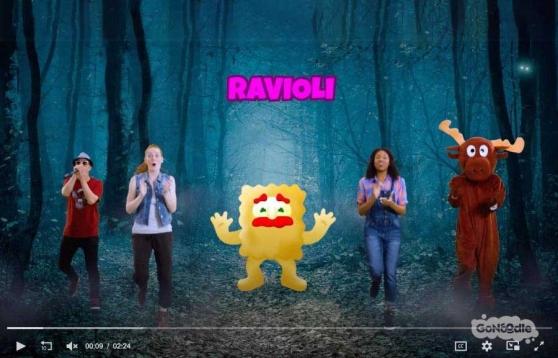
Videos, like those from GoNoodle, help make fitness fun.
Digital tools have become a major part of today’s fitness regimens — heart rate monitors, computerized machines, step counters, motivating videos — but it’s much less common for technology resources to be integrated in physical education classes. Yet digital tools can be helpful additions to enhance student motivation, fine-tune form, accommodate differentiation and offer choices to students.
Skill building with video
It can be helpful to watch something before trying it yourself. YouTube lets you slow down playback to replay a movement at half speed, making it easier to learn. As students try out a skill, they can use an iPad to record themselves practicing and then play it back in slow motion to see how they can improve. It’s like their very own instant replay.
Video can enable differentiation, too. Small groups can watch a video focused on one technique in a particular sport and practice it. Then, those students can teach the moves to a new set of classmates. Different groups can learn entirely new sports, or students can independently turnkey a new skill to the whole class.
YouTube has many videos that teach skills in various sports and activities. Look for videos designed for the grade level you teach, with simple explanations and movement modeling. See the One Up Basketball Training channel or Simply Soccer for good examples.
Video can also model good form for exercises like push-ups and leg raises. The New York Times’ Well section has simple, looping video examples with step-by-step directions. GoNoodle is well-known for its fun approach to promoting movement in early elementary school students.
Activity tracker substitutes
If you don’t have a class set of activity trackers, there are free mobile apps that can be used to monitor movements. Pedometer++ is a powerful tool to count steps, and Simple Counter tracks repetitions or laps. Among the many uses of the Google Fit app, you can measure heart and respiratory rates by touching the lens of your phone’s camera.
Not only do these tools teach the importance of practice and setting fitness goals, but you can also integrate data and math content into your class.
If you want to obtain a set of classroom trackers and your school can’t afford them, look for grant opportunities or create a request on the Donors Choose website to seek funding.
Dance and movement
Dance moves are increasingly popular, thanks to video reels and TikTok, and are a great form of exercise. There are well-made dance videos for all grade levels on YouTube: Danny Go! for early elementary school students, Kidz Bop dance-along videos for elementary and middle school students, and the Learn How to Dance channel for older students.
What these channels have in common is clear instruction, repetitive movements, a youth-centered vibe and a sense of fun. If these don’t strike your fancy, there are hundreds of other choices, but be sure videos are easy to follow and age appropriate. Always carefully review a video before you present it to your class.
Sandy Scragg is an instructional technology specialist with more than 15 years of experience in New York City public schools.